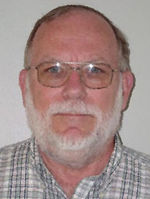User:Karl Oberholser: Difference between revisions
No edit summary |
No edit summary |
||
| Line 16: | Line 16: | ||
*[[User:Karl_Oberholser/Phosphoenolpyruvate:Sugar_Phosphotransferase]] - Large frame of a movie of the mechanism of Enzyme I of the Phosphoenolpyruvate:Sugar Phosphotransferase System. The original page with a smaller movie frame and a description of the system and mechanism is [[Enzyme_I_of_the_Phosphoenolpyruvate:Sugar_Phosphotransferase_System|here]]. | *[[User:Karl_Oberholser/Phosphoenolpyruvate:Sugar_Phosphotransferase]] - Large frame of a movie of the mechanism of Enzyme I of the Phosphoenolpyruvate:Sugar Phosphotransferase System. The original page with a smaller movie frame and a description of the system and mechanism is [[Enzyme_I_of_the_Phosphoenolpyruvate:Sugar_Phosphotransferase_System|here]]. | ||
*[[Complex III of Electron Transport Chain]] - After illustration of the structures and relative positions of the active peptides, the reactions of the Q cycle are illustrated and explained. | *[[Complex III of Electron Transport Chain]] - After illustration of the structures and relative positions of the active peptides, the reactions of the Q cycle are illustrated and explained. | ||
*[[Syn_and_anti_nucleosides]] - illustrates the structural difference between the syn and anti configurations of nucleosides and the steric hindrance that is present in the syn configuration of pyrimidine nucleosides. | |||
<br> | <br> | ||
Revision as of 18:21, 15 January 2010
Karl OberholserKarl Oberholser

Professor of Chemistry, Chemistry and Biochemistry Department, Messiah College, Grantham, PA, USA
oberhols@messiah.edu
I used HyperChem in my first venture in biomolecular visualization and computation. I eventually made some tutorials in which information was passed between HyperChem and Toolbook. When I became aware of Chime, I focused most of my work on protein structure and function and used Protein Explorer and PiPEs as they became available. When MolSlides became a feature of PE, I developed an assignment for biochemistry students to make MolSlides of a protein of their choice. In the early years of this work I received a variety of internal grants from Messiah College, and in more recent years I have been receiving release time from teaching. Realizing that Chime was on its death bed I got serious about learning Jmol during the Summer '07 , and during my Fall '07 sabbatical I ported most of the PiPEs to Jmol and converted the last of the HyperChem scripts to Jmol scripts. For most of this work I used α and β versions of Jmol Tutorial-Authoring Template being made by Eric Martz. My first exposure to Proteopedia was mentoring Emily Forschler as she developed Photosystem II.
Proteopedia PagesProteopedia Pages
- User:Karl Oberholser/Sandbox 1 - sandbox for my development work
- Fibroins
- Alpha-helical coiled-coil
- Class of globular proteins
- Myoglobin
- User:Karl_Oberholser/Ramachandran_Plots
- Karl_oberholser/PPDK_large - Large frame of a movie of the mechanism of pyruvate phosphate dikinase. The original page with a smaller movie frame and a description of the mechanism is here.
- User:Karl_Oberholser/Phosphoenolpyruvate:Sugar_Phosphotransferase - Large frame of a movie of the mechanism of Enzyme I of the Phosphoenolpyruvate:Sugar Phosphotransferase System. The original page with a smaller movie frame and a description of the system and mechanism is here.
- Complex III of Electron Transport Chain - After illustration of the structures and relative positions of the active peptides, the reactions of the Q cycle are illustrated and explained.
- Syn_and_anti_nucleosides - illustrates the structural difference between the syn and anti configurations of nucleosides and the steric hindrance that is present in the syn configuration of pyrimidine nucleosides.
Other structures and tutorials available in JmolOther structures and tutorials available in Jmol
- Klotho Biochemicals in Jmol - A searchable list of common biochemicals whose structures can be displayed conveniently in Jmol.
- Collagen
- Acetylcholinesterase
- Carbohydrates - Series of tutorials that focus on aspects of the 3D structure of mono-, di-, and polysaccharides that are not easily illustrated with 2D figures in text books.